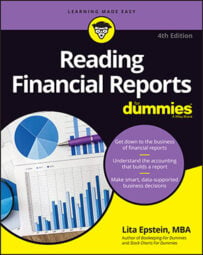In addition to net income, the other number you hear in financial reporting almost as often about a company's earnings results is earnings per share. Earnings per share is the amount of net income the company makes per share of stock available on the market.
For example, if you own 100 shares of stock in ABC Company and it earns $1 per share, $100 of those earnings are yours unless the company decides to reinvest the earnings for future growth. In reality, a company rarely pays out 100 percent of its earnings; it usually pays out a small fraction of those earnings.
You find the calculation for earnings per share on the income statement after net income, or in a separate statement called the statement of shareholders’ equity. The calculation for earnings per share is relatively simple: You divide the net earnings or net income (which you find on the income statement) by the number of outstanding shares (which you can find on the balance sheet).
Basically, earnings per share shows you how much money each shareholder made for each of her shares. In reality, this money doesn't get paid back to the shareholder. Instead, most is reinvested in future operations of the company. The net income or loss is added to the retained earnings number on the balance sheet.
Any dividends declared per share appear on the income statement under the earnings per share information. You find the amount of dividends paid on the statement of cash flows. The company's board of directors declares dividends either quarterly or annually.
At the bottom of an income statement, you see two numbers:
The basic earnings per share is a calculation based on the number of shares outstanding at the time the income statement is developed.
The diluted earnings per share includes other potential shares that may eventually be outstanding. This category includes shares designated for items like stock options, warrants (shares of stock companies promise to bondholders or preferred shareholders for additional shares of stock at a set price, usually below the stock's market value), and convertibles (shares of stock companies promise to a lender who owns bonds that are convertible to stock).
These numbers give you an idea of how much a company earns per share. You can use them to analyze the company's profitability.

